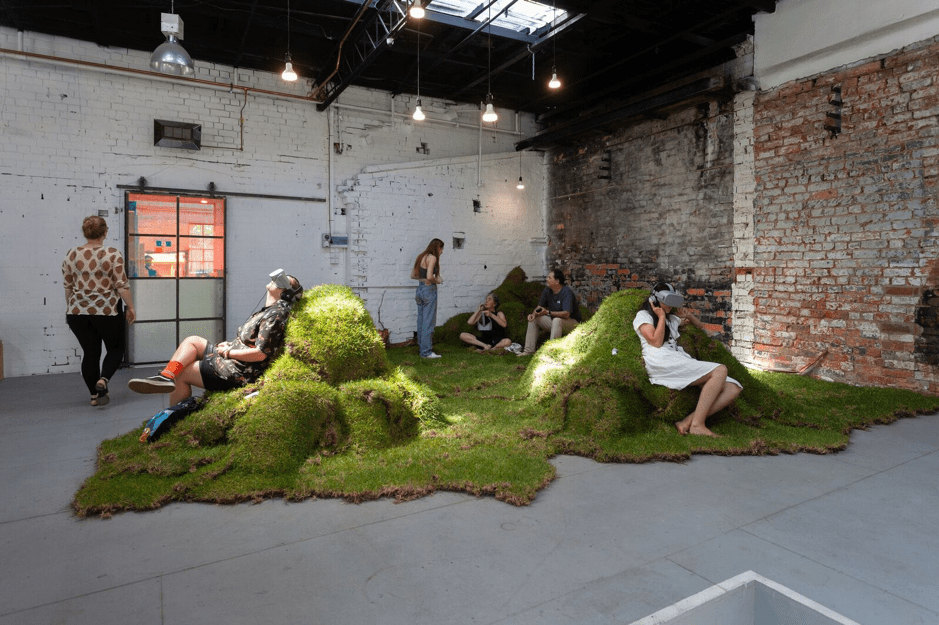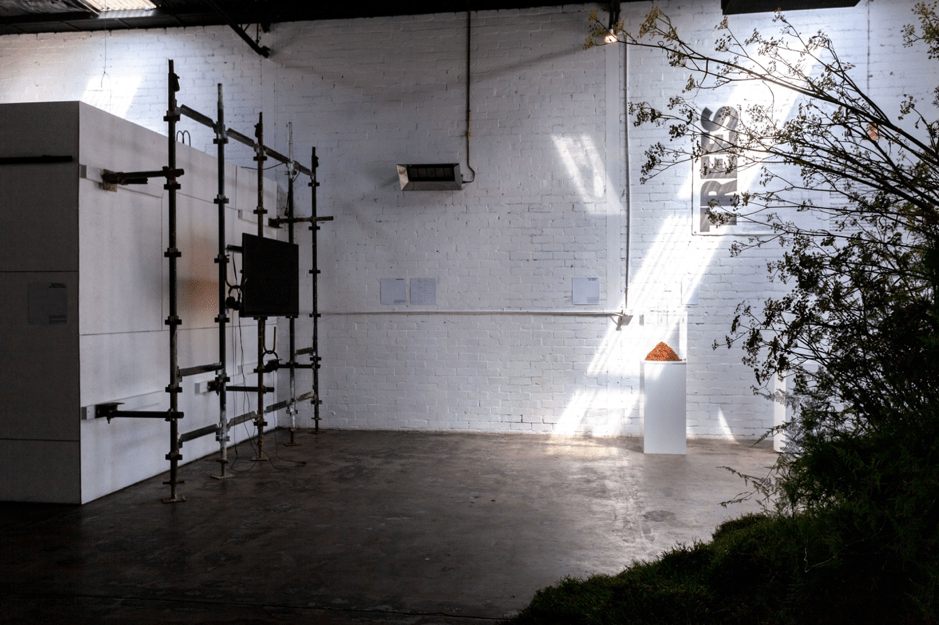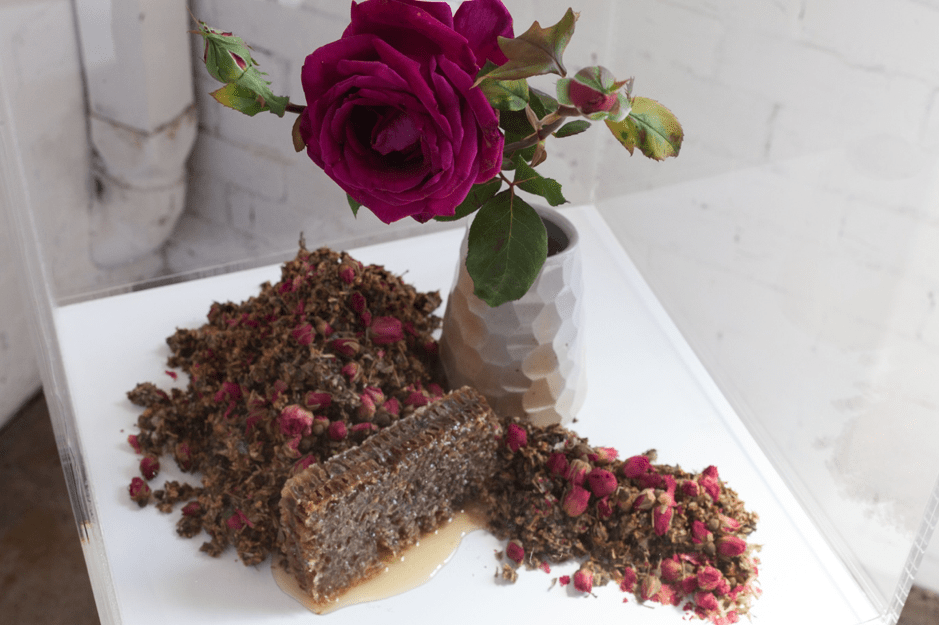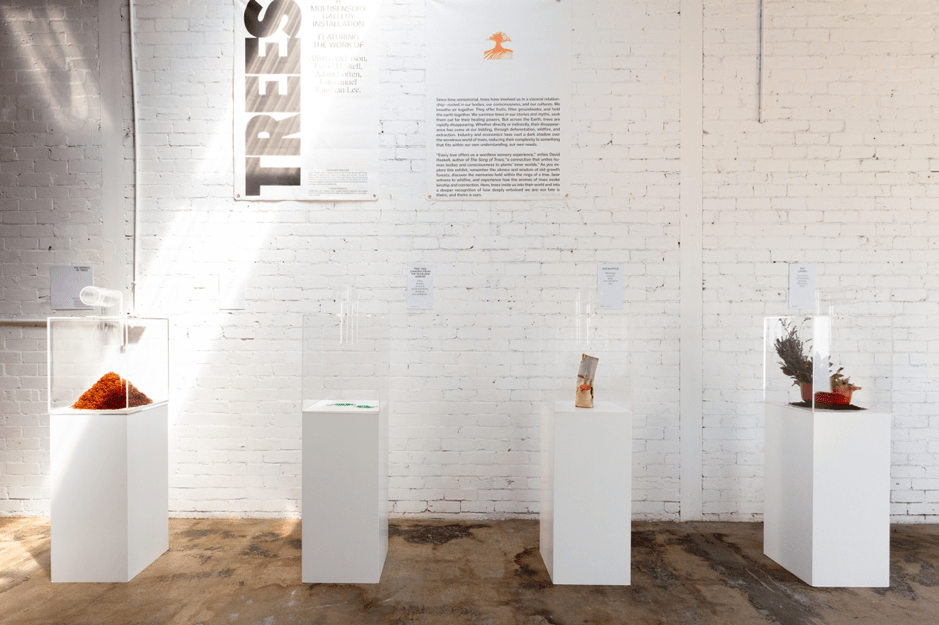




Curated by: Cristana Napoleone and Emergence Magazine
Featuring: Alisha Anderson, Hattie Malloy, Terrain Projects, Adam Loften and
Emmanuel Vaughan-Lee.
Nestled amongst the industrial buildings of Fitzroy, Melbourne, lies Trees, a multisensory exhibition focused on the way humans interact with the natural environment. The exhibition provides a welcomed respite from the concreted environs it exists within — the installations, lending themselves to each of the human senses, provide the space with a respiratory feel. It is breathing, it is alive, and although I find myself within a steel roofed, fluorescently lit room, the space has been handed a voice.
Curated by Cristana Napoleone and Emergence Magazine, Trees features the video works of Alisha Anderson, botanical installations by Hattie Malloy, an interactive sensory installation designed by Terrain Projects and a virtual reality experience produced by Adam Loften and Emmanuel Vaughan-Lee. With such a diversity of form, Trees forces the contemplation of nature in social, virtual, psychological and political terms. And the works within combine to act as a repertory exploring the ways trees communicate with us – inviting visitors to rediscover a certain kinship, or moral community, with plants.
Terrain Project’s olfactory tanks, which take inspiration from Pulitzer nominee David Haksell’s essay ‘Eleven Ways of Smelling a Tree’, greets visitors as they enter the open-plan warehouse. The work, presented as eight separate scent-based ‘micro-climates’ trapped inside clear Perspex cubes, invites viewers to engage using their sense of smell. There are small, perforated air-holes reaching out of the cubes, and accompanying wall texts providing descriptions of the items inside and the emotions their scents may evoke. The scents are unique, often surprising, and the nostalgic Proustian reference is undeniable: memories of bonfires at the beach or Christmas lunches are unmasked into crisp lucidity from cubes containing charred gum-bark or a piles of fresh roses and honeycomb.
Hattie Mallow’s botanical sculptures, comprised predominantly of scutch grass and fennel, offer a convergence between practices of floristry, sculpture and ephemeral art. The works furnish the room, seemingly providing seats for passers-by, with grass bundled into several sinuous banks at the perfect height to sit on. They are also, however, whimsical depictions of mountainous forests, with large fennel growths standing proud over the largest mounds and sprawling flatlands that extend along the concrete flooring the works are perched on. The dichotomy here forces the consideration of the natural and unnatural, a jolting leap from the cold, man-made flooring to the earthly, entirely human-constructed turfing.
Moving to the digital, Alisha Anderson’s Meristem and Adam Loften and Emmanuel Vaughan-Lee’s Sanctuaries of Silence are video works structured around the fluidity of nature through kaleidoscopic floral imagery and immersive recorded soundscapes. Anderson’s film is a result of documenting a native pine forest in Oregon following a devastating wildfire. The film follows a process of sitting, capturing burnt canopies, the slow return of birdlife to the charred area and the rehabilitation processes undertaken by arborists in the area. Even viewed through distance and a screen, the work captures the immense presence of the fallen and marginally standing giants left in the wake of fire, where the act of witnessing becomes inquisitive, retributory, and mournful.
The Atomic Tree, Loften and Vaughn-Lee’s virtual reality experience, draws influence from the delicacy of forests and the effects of man-made disasters. The film, set within an ancient Japanese cedar forest on the outskirts of Hiroshima – the site on which the world’s first atomic bomb was dropped in 1945 – encompasses a deep story of community and kinship. Nestled within the sparse forest lies a Buddhist temple which for generations has harvested white pine bonsai trees. The juxtaposition between the intricate, minute bonsai and the endless white hue of the forest creates a captivating visual parallel. Conveyed by a rapid editing of scenes between the two plants, large and small, the evident impact humans have on all delicate plant life requests a considered reflection on the delicate, interwoven world we live in.
The projects within Trees combine to form somewhat of a microcosm. In isolation, they appeal to one or two of our senses, however, when viewed collectively, they hold an edifying power that is entirely palpable. The exhibition traverses topics of life and death, tackled from both conservation and restorative angles, in which plants are provided a voice that visitors are in turn compelled to listen to. Coupled with its broad geographical perspective, a resulting awareness of the many concurrent processes of ruination are given light, while hope for environmentally focused productive activities is nonetheless evident.
Trees took place only months after one of the most devastating bushfire seasons in Australian history, offering an opportunity to reflect on and rethink the relationship between humans and the environment. It embodied what could be described as proto-ecological exhibition making: educational, hopeful, informative and, in many ways, capable of conveying ideas extremely pertinent to those who visited as the world continues to progress deeper into environmental instability.
Emerson Radisich is a curator and educator from Aotearoa. He is currently the Assistant Curator at Backwoods Gallery, teaches as the University of Melbourne, and is writing a thesis on public art festivals.
